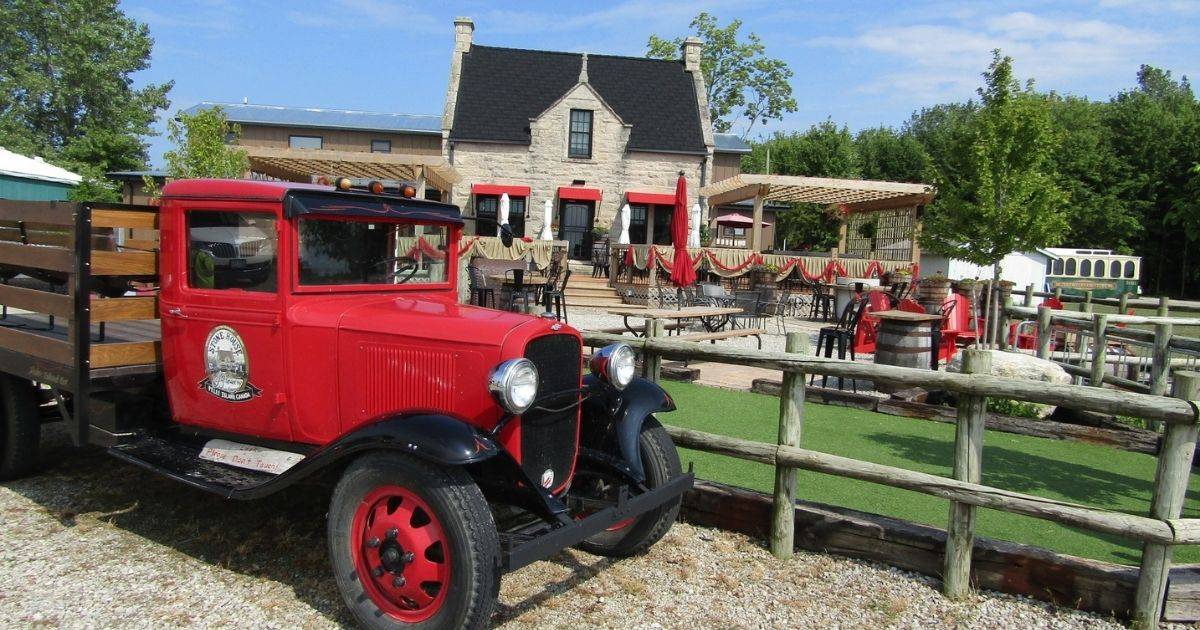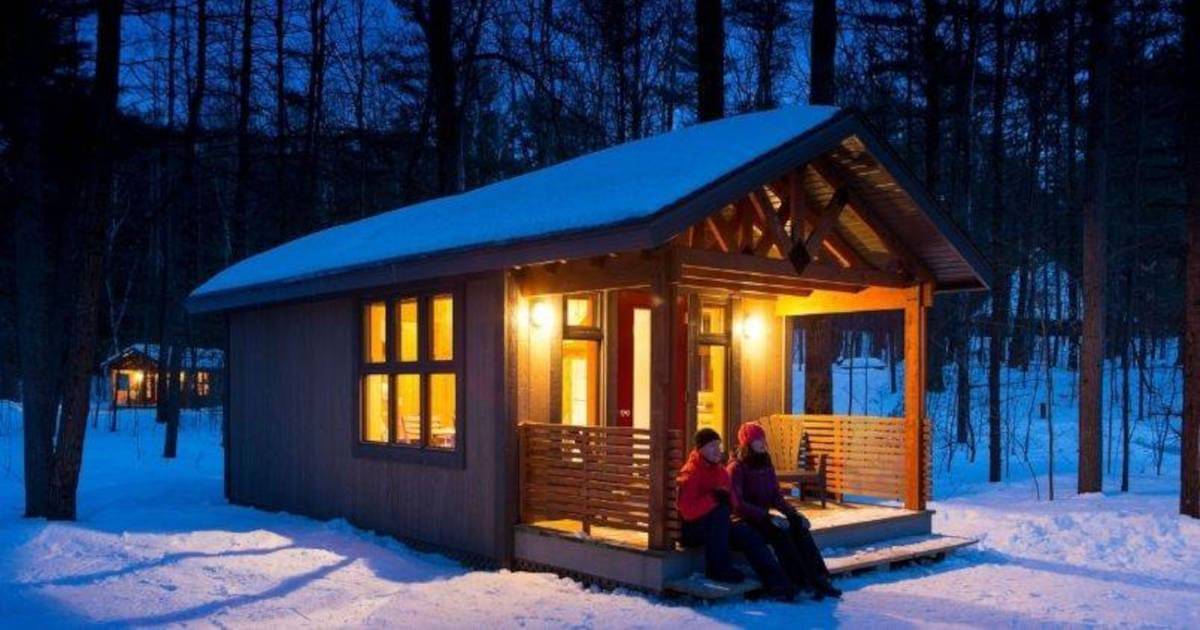In high school, our environment group, STEPS (Students Taking Environmental Protection Seriously), celebrated year’s end with a coveted trip to Point Pelee National Park, Ontario. We loaded our geography teacher’s hot-red Mazda with a ridiculous amount of cargo (more junk food than camping gear) and battled to shove our road-trip cassette tapes into rotation. Even though it was early May, the nights still held a bite of winter, especially in a non-efficient, lumpy Canadian Tire–issue sleeping bag unfurled on a damp tent floor.

My pal Bob and I packed all the Pelee essentials: binoculars, a Peterson bird guide, strawberry Pop-Tarts and glow-in-the-dark bubble gum. After a dusk hike through the Carolinian woods and Lake Erie’s shore, we returned to our campsite to discover that we had been robbed. A nimble-fingered raccoon had found our stash and left a guilty trail: Pieces of mangled gum glowed in the woods like fat (and dead) fireflies.
I don’t remember the things I was probably supposed to remember from this monumental trip, like how the park is located at the southernmost point of Canada’s mainland and is our country’s second-smallest and most ecologically diverse national park. Instead, I remember the gum-loving raccoon and listening to Bette Midler’s “From a Distance” on repeat.

Point Pelee National Park’s popularity quickly led to it being deemed one of the highest-stressed parks in the country, especially after the Canada 150 free park-entry incentive in 2017. Point Pelee became a national park on May 29, 1918. Recent ongoing restoration projects have been implemented to ensure that the park retains its title as the “Warbler Capital of Canada” (43 of 52 warbler species have been recorded here). A “species at risk” tree-recovery program was initiated, the marsh boardwalk received a makeover, and sand dunes were added to rehabilitate the globally rare Lake Erie sandspit savannah habitat. Twenty-four oTENTiks (think cabin meets tent, with a wink of glamping) were erected in 2017 to establish a less invasive camping experience in the area that was once designated for group camping—the very area where Bob and I missed out on our glow-in-the-dark-gum experience.
Fast-Forward
Fast-forward 30 years or so. My wife and I decided to expand our camping range last summer. When we lived in southwestern Ontario, Long Point Provincial Park was our go-to. When we lived in Uxbridge, Ontario, we discovered the marvel of southeastern parks like Bon Echo, Presqu’ile, and the Land O’ Lakes darling, Sharbot Lake. Now living in Lion’s Head (in Ontario’s northern Bruce Peninsula), our lakeside backyard is probably the best camping spot we’ll ever find, but we were eager to rediscover Essex County and go due south to Canada’s most southerly point. We looked at Point Pelee’s glam oTENTik experience but had a new four-person Eureka tent we wanted to test drive. “What about Pelee Island?” we asked ourselves.
Neither of us had ever been, though we already appreciated the terroir of Pelee Island Winery’s Baco Noir. That winter, I had read The Pelee Project: One Woman’s Escape from Urban Madness by Jane Christmas and was all-in for a pseudo-Jane experience. In 2000, Christmas pressed pause on her hairy life, took a 3-month sabbatical, put her house up for sale, moved to Pelee with her 10-year-old daughter, and wrote about it all without censor. I wanted to write about it too. And here we are.

The Skinny on Pelee
It’s an intimate and dedicated population on Pelee Island. There are probably more wild pheasants than humans. At 42 sq km, it’s the largest island in Lake Erie, with a hardy population of 235 (2016) that thins come winter due to the suspended ferry service.
While migratory birds know Pelee Island inside and out, so did the rum-runners. During the Prohibition era, Al Capone used Pelee as an embarkation point en route to Ohio. The ferry service actually continues on to Sandusky, Ohio, if you want to recreate a legendary rum-run.
For the kiddos who call the island home, they are privy to an Elysian education. Pelee Island Public School is Canada’s most southern school community and is located in a unique three-room schoolhouse that was built in 1927. Students attending high school have the option of billeting with a family on the mainland during the school year to continue their studies in person, or stay put on the island and enrol in online courses.
Visitors and residents love Pelee for the obstacles that keep it precious. It’s a concentrated effort to get to, and businesses keep modest hours. There are no chain stores or monopolies. It’s like a country drive (that will take you about an hour to loop) where everyone waves and wonders who you’re related to. The islanders are mighty and protective of their paradise, but also welcoming and willing to share the natural abundance that makes it so.

Geography 101
Over half of America’s 50 states are located north of Pelee Island, including northern California! The island shares the same latitude and warmer wine-growing climate of Portugal, Spain, Italy, Germany and France. It’s best to learn this geography lesson before imbibing.
Located on two major continental flyways, the island is graced twice a year with a visit of thousands of migratory birds and butterflies. This 10,000-acre island coincidentally is home to more than 10,000 treasured species and rarities, like sassafras, hop tree, prickly pear cactus, honey locust and blue racer (snake). It’s a genuine scavenger hunt in the making.
The beaches, trails, cozy B&Bs and megafauna attract all ages eager to explore, taste and experience one of Canada’s most hushed secrets.

Getting There
The ferry service from Leamington and Kingsville, Ontario, on the Jiimaan or Pelee Islander, is fast (90 minutes), cheap and tax-free (it’s $7.50 per passenger, one way, plus the vehicle rate; the “low vehicle” rate for cars and SUVs under 7-foot-6 is $16.50, one way).

The ferries come to a halt from December 10 to March 29 annually, weather depending. During this time, the Pelee Island Winter Air Service fills the gap with daily flights for $26.25 (adult, one way). Isn’t that the cost of a checked bag on WestJet or Air Canada nowadays?
Where to Pop Your Tent and Champagne
East Park is Canada’s southernmost campground. The 22 private sites are first come, first served. You can reserve a site, but it will be sight unseen. There are only two campgrounds on the island to choose from. If you and your chiropractor are not thrilled about you sleeping on the ground, the island has several lakefront B&Bs, cottage rentals and self-catering offerings, which serve as ideal launch pads for cycling, hiking and early birding.
While the Anchor & Wheel Inn has rooms, waterfront cottages and camping all packed into one property, the tinier East Park offers a leafier enclave. From both, it’s an easy 1-minute walking commute to East Beach’s narrow stretch of sand. The island’s beaches have been eaten up by rising lake levels, but there’s still enough real estate for a lawn chair and a solid skipping-stone stance. During our stay, tall ships were sliding across the horizon en route to Kingsville, on the mainland, adding to the maritime magic of it all. Be sure to have your Peterson guide at the ready for shorebird and dabbling duck ID!
At night, the Carolinian woods came alive with tree frogs, cicadas and bat chatter. It was not unlike a jungle stay in Belize. Century-old willows, oaks hidden by ever-climbing ivy, and the gnarled maples along the East Shore road are the stuff of E.H. Shepard’s sketchbook. Some of the trees were the circumference of four adult tree huggers!
Speaking of tree huggers, East Park earned quick brownie points with us for providing plastic buckets for volunteer beach cleanup of litter and microplastics.
It really doesn’t matter where you stay on the island, because the line between outdoors and indoors blurs with the ever-present lake breeze and cheery birdsong.

A Pheasant Tutorial
Pelee’s most notable event, the pheasant hunt, is a deeply steeped tradition of more than 7 decades. The 10,000 acres of hedgerows and open fields attract hunters from around the world. Pheasants were introduced to the U.S. from Asia in the 1880s. The ring-necked pheasants on Pelee are raised in captivity and released for the annual fall hunt, which runs from late October to the first week of December.
Hunters who offer to mentor apprentice hunters (ages 12 to 14, with a valid Outdoors Card) receive 10 percent off their licences in gratitude for coaching the younger generation. Early “bird” pricing (February 1 to July 31) for the main hunt (limit 10 birds) is $282.50 (after August 1, the price increases to $339). I’ve never bought a pheasant, but a deli chicken is $12 at our local Foodland, so I suppose that math is about right.
Here are a few things you might not know about pheasants.
- They can crow like a rooster and can be heard a mile away.
- They will flush vertically if startled or threatened, and can fly 40 mph.
- According to All About Birds, they generally only fly in 600-foot bursts. However, in 1941, observers witnessed a pheasant flying 4 miles across a lake.
Walking and Wining (Not Whining)
Vin Villa, the first estate winery in Canada, was established in the 1860s on Pelee Island. It was also the birthplace of sparkling wine in North America. At the 1878 Paris world’s fair, Vin Villa was awarded a bronze medallion, making it the first North American wine to receive worldwide fanfare.
The romantic rocky ruins and restored wine cellars of Vin Villa make it a popular wedding venue. For a gulp of liquid history, tours are available in the summer on Saturdays or Sundays.
If you’re on the island midweek (like we were), fear not: You can visit Canada’s largest private estate winery instead. From East Park Campground, it was an easy, flat and pastoral walk to the Pelee Island Winery Pavilion. The 700-acre farm has grapevine roots that run 150 years deep. The grapes have big bragging rights, as they grow in one of Canada’s warmest growing regions.
World Wildlife Fund and Wine
When you swirl a glass of Pelee Island wine, you can pat yourself on the back for a sound and sustainable choice. The vineyard follows the strict standards of the World Wildlife Fund’s sustainable vineyard practice guidelines. As a founding member of Sustainable Winemaking Ontario, Pelee Island Winery sets a solid example with limited and controlled pesticide use and reliance on 100 percent island-grown fertilizer: sorghum grass. Go wild!
The winery recently purchased a red cedar savannah forest as part of a commitment to restore the island landscape. This investment in renewables like solar and wind power, biodynamic sewage, composting and organic farming practices is worthy of raising a glass of Pinot Gris too.
This is where I’ll really reel you in: At the pavilion, you are encouraged to purchase a bottle of plonk and enjoy it on the property! Pick a sun-dappled picnic table or tuck into one of the oversize wine barrels with your crew. There are several barbecues at the ready, too, as part of the winery’s “You BBQ” menu. Choose your meat (steak, chicken breasts, kebabs, sausage, burgers) at the Deli Hut and spice it up with a selection of rubs. Lounging and loitering is encouraged, and if you don’t feel like cooking, you can order a stone-oven pizza, cheese boards, tapas and pulled pork sandwiches from the Hut instead.
Siberian Pineapples?
Kim and I were lucky to visit the island in August, when the orange jewel-like sea buckthorn was being harvested. The winery was selling 1-pound bags of the bright and snappy fruit for $10. While we had temporary sea buckthorn jelly and salsa-making fantasies, we had too many days on the road (and in our tent) ahead of us to preserve the berries.
Here’s what you might not know about sea buckthorn: Also known as Siberian pineapple and swallow thorn, it was used in ancient Greece to promote weight gain and shiny coats in horses. The generic Latin name, Hippophae, translates as “shiny horse.” And, possibly, shiny human hair instead of weight gain?
The serene setting of the winery pavilion is so civilized (or a little rowdy when impromptu Yardzee games get out of control). We were reminded of Arrington Vineyard (founded by Kix Brooks), south of Nashville. Visitors take picnicking to the next level at Arrington, with fine linens and elaborate spreads of cheese and other finery. The vineyard encourages families to enjoy the sylvan setting, good company and a 2017 Red Fox Red, plus live entertainment and a traditional roaring bonfire.
Hungry for More
Beachcombing and combing the trees for warblers can ramp up anyone’s appetite. Stone House 1891 Craft Beer and Kitchen is a gorgeous lakeside restoration that will satisfy historians and epicureans alike. This house served as the island’s liquor store in the 1920s and ‘30s. Rumours still circulate about Al Capone’s Purple Gang frequenting the area on starlit runs to nearby U.S. islands.
Built by Freemason Joe Lowe in 1891, the house took 4 years to build, much longer than what he had promised to his pacing wife. Guests will see the larger-than-life praying hands—fixed to the crest of the roof—carved as a tribute to Mrs. Lowe’s patience.
Situated almost directly across from the ferry dock, it’s the ideal spot to grab something to eat before returning to the mainland. The 800-degree wood-burning pizza oven delivers sizzling pies in a blink. The panorama of Lake Erie from the Stone House deck is like staring into a silver foil painting.
This is why we love Pelee. It’s everything, and yet the best place to do nothing.
Jules Torti’s work has been published in The Vancouver Sun, The Globe & Mail, travelife, Canadian Running and Coast Mountain Culture. With experiences as a canoe outtripper, outdoor educator, colouring book illustrator and freelancer, she is thrilled to be able to curate, write and read about the very best things in life.














